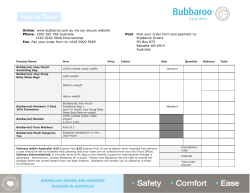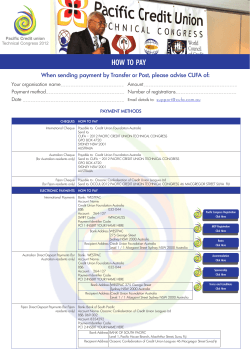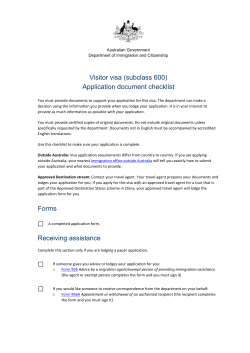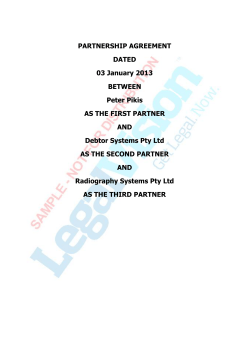
Tracing overlay maps task
Core units: Exemplars – Year 8 Illustration 2: An urban myth Tracing overlay maps task What is a tracing overlay map? A 'tracing overlay map' is a map showing a number of geographic features as layers on a base map. The layers are created on tracing paper so that the spatial association or connection between the features can be easily identified. When such maps are created digitally, it is known as a Geographic Information System (GIS). What you will need For this task you will need: a base map of Australia that shows population density (see below) a map of Australia’s Annual Average Rainfall sourced from an atlas or from the Australian Bureau of Meteorology: http://www.bom.gov.au/jsp/ncc/climate_averages/rainfall/index.jsp a physical map of Australia sourced from an atlas or Free world maps: http://www.freeworldmaps.net/australia/index.html tracing paper staples or sticky tape a lead pencil for drawing coloured pencils a fineliner to complete your map. Key definitions Population distribution: The pattern of the spread or arrangement of something over an area. Population density: The number of people per square kilometre. © 2013 Education Services Australia Ltd, except where indicated otherwise. You may copy, distribute and adapt this material free of charge for non-commercial educational purposes, provided you retain all copyright notices and acknowledgements. 1 Make a tracing overlay map 1. The map of population density (see next page) is your 'base map'. Label the capital cities on your base map. Note that the map already has a title as it is a copy from the Australian Bureau of Statistics website. You will add two layers of tracing paper to this map with a different feature mapped on each layer. 2. The first layer will show the physical features of Australia. Attach the tracing paper on one side of the base map (like a hinge) and trace the outline of the continent on to this first sheet of tracing paper. Then, use a physical map of Australia and copy the information onto the tracing paper. Be sure to label the Great Dividing Range, the Simpson Desert, the Great Victoria Desert and the Great Sandy Desert. Add a title to this map. 3. The second layer will show the annual average rainfall of Australia. Attach this map to the base map (like a hinge). Again trace the outline of the continent. This time you will copy the rainfall information on to the tracing paper. Add a title to this map. 4. Make sure that each map is complete with a north arrow, a legend, a title and a source. Analysing the map details Use your maps to complete these tasks below. 1. Describe the distribution of Australia’s population. Be precise in your answer by using directions (north, south, east, west), and using distances and numbers that you read from the legend. Find out what proportion of Australia’s population live in the capital cities. 2. Describe the distribution of Australia’s rainfall. 3. Outline any connection you can see between rainfall and population distribution. 4. Explain how rainfall distribution could help to explain population distribution. 5. Consider how the physical geography of Australia can help to explain the population distribution. 6. Suggest other reasons that might account for the population distribution that you have described. © 2013 Education Services Australia Ltd, except where indicated otherwise. You may copy, distribute and adapt this material free of charge for non-commercial educational purposes, provided you retain all copyright notices and acknowledgements. 2 Australia: Population density Colours depict highest density around the coast of the country, particularly in the East, and lowest density in the centre and to the west Source: Australian Bureau of Statistics (3218.0). Retrieved October 2012, from: http://www.abs.gov.au/ausstats/abs@.nsf/Products/3218.0~2011~Main+Features~Main+Features?OpenDocument #PARALINK. © Commonwealth of Australia, 2013. © 2013 Education Services Australia Ltd, except where indicated otherwise. You may copy, distribute and adapt this material free of charge for non-commercial educational purposes, provided you retain all copyright notices and acknowledgements. 3
© Copyright 2025





















